| Srl | Item |
| 1 |
ID:
170175
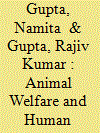

|
|
|
|
|
| Summary/Abstract |
India’s large stray dog population, estimated to be about 25 million, poses substantial risks to human health, motivating some civic bodies to employ cruel methods to control dog populations. This article argues that while human health is certainly a priority, it is also important to consider animal welfare and to handle dog population control measures without causing unnecessary animal suffering. Triangulating the issues of rabies control, dog population management and state intervention, the article identifies recent practical difficulties in local management of dog population control laws and policies in India’s model city of Chandigarh. Based on a survey of local opinions, this shows how rising human–animal conflicts require new ways of handling existing challenges.
|
|
|
|
|
|
|
|
|
|
|
|
|
|
|
|
| 2 |
ID:
170172
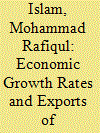

|
|
|
|
|
| Summary/Abstract |
Global images of Bangladesh as a desperately poor country in need of foreign aid require revision in light of recent statistics that confirm impressive economic growth rates despite protracted political problems and climate-related risks. The article presents and discusses statistical evidence relating to recent economic growth rates of Bangladesh in terms of export, import and gross domestic product. This confirms the status of the country as a new tiger economy, moving away from its traditional dependence on agriculture. However, excessive reliance on exports of ready-made garments is found to be risky, while a more balanced growth model with a diverse basket of exports seems advisable.
|
|
|
|
|
|
|
|
|
|
|
|
|
|
|
|
| 3 |
ID:
170173
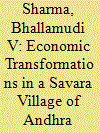

|
|
|
|
|
| Summary/Abstract |
Even tribal communities in India living in relative geographic isolation have experienced significant transformations during the last 70 years. Many studies have investigated the impact of tribal development programmes on the socio-economic conditions of different tribal communities. However, few attempts to systematically re-study the same tribal village after some decades have been made. This article re-examines the transformation of different sources of income for a Savara village in Andhra Pradesh and specifically scrutinises the impact of cashew plantations promoted in 1983–5. Since the acceptance to undertake cashew plantation was a precondition for the Savara of Manapuram to achieve economic and language integration, the question becomes what have been the results after some decades. The article identifies many consequences for this community, not just a shift from tamarind to cashew.
|
|
|
|
|
|
|
|
|
|
|
|
|
|
|
|
| 4 |
ID:
170174
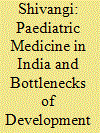

|
|
|
|
|
| Summary/Abstract |
This article argues that the poor state of paediatric medicine in India still restrains and often prevents the healthy development of far too many young Indians. Infants as junior-most citizens deserve diligent care, as they have legal entitlements to specialised medical services, ensuring their survival and healthy growth, ultimately for the benefit of the entire nation. The article first traces the somewhat stunted colonial institutional development of paediatric medicine in India. It then proceeds to perform a critical analysis of the continuing harm of negligence concerning the health and upbringing of India’s vulnerable infants, challenging the state to become more committed to integrated child development.
|
|
|
|
|
|
|
|
|
|
|
|
|
|
|
|
| 5 |
ID:
170171
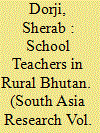

|
|
|
|
|
| Summary/Abstract |
In Bhutan, recent increases in annual teacher attrition rates, particularly in rural areas, pose significant challenges for the government and concerned agencies in terms of retaining qualified teachers and reducing teacher attrition rates and turnover. This article, partly based on a field study exploring the quality of work life (QWL) and well-being of school teachers in rural Bhutan, explores the possible reasons why such teachers might seek to resign. Using mixed methodology, the study reveals poor QWL and well-being of teachers, caused by a variety of factors. In view of such findings, the Ministry of Education and the government need to ensure better all-round protection for teachers to avoid the risk of large-scale resignations.
|
|
|
|
|
|
|
|
|
|
|
|
|
|
|
|
| 6 |
ID:
170170


|
|
|
|
|
| Summary/Abstract |
After India’s General Election of 2014, political analysts coined the term ‘Modi wave’ to depict the phenomenon of a strong leader who manages to obtain a major gain in a landslide victory. Still wondering whether this would be a one-off phenomenon, analysts found in 2019 to their surprise that India’s most recent Parliamentary elections created a repeat wave. The article theorises the concept of ‘wave election’ and revisits earlier Indian elections to track the appearance of such waves. It then proceeds to examine what may make the most recent Modi ‘wave’ pertinent for future analysis, suggesting that more attention to the phenomenon of charisma and wider transformational agenda of governance rather than excessive focus on religion and saffron elements may be crucial to understand what is happening in India.
|
|
|
|
|
|
|
|
|
|
|
|
|
|
|
|